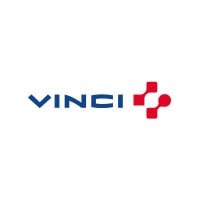
VINCI
VINCI is a world leader in concessions, energy and construction, employing 280.000 people in some 120 countries. We design, finance, build and operate infrastructure and facilities that help improve daily life and mobility for all. Because we believe in all-round performance, above and beyond economic results, we are committed to operating in an environmentally and socially responsible manner. You can be part of projects that bring lasting change to urban ecosystems and entire regions. Join the team!






